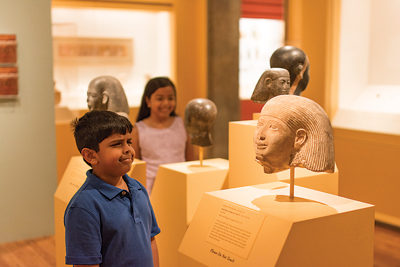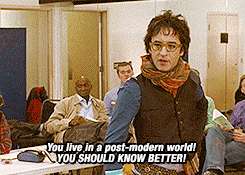RESEARCH COLUMN
BY: JENNIFER LEE
Welcome back to the Research Column! This summer, we’ll be taking a closer look at some of the critical theory that has influenced the museum field and continues to shape our ideas and conversations about museums.
If you’re reading this blog, there’s a non-zero chance you’ve heard of ‘New Museology’. There may even be a neglected copy of
The New Museology (1988, ed. Vergo), purchased in a fit of pre-grad-school optimism, sitting on your bookshelf. (Guilty). So for my inaugural Musings column, I decided to take out my copy and get to grips with the New Museology, the Old Museology, and whatever differences lay between them.
 |
| On the cover, the Saxon god Thuner looks rather accusingly at students who don't do their theory reading. (Photo courtesy of Jennifer Lee) |
New Museology is a school of thought which emphasizes reflexivity, accessibility, justice, and interdisciplinarity in museum practice. It emerged in the 1970s and flourished in the 1980s, along with the ecomuseum movement and community museology, and the general expansion and exploration of the definition of ‘museum’ as new types of museums and methods sprung up rapidly. After more than a decade of exploring the ideas of new museology, the Declaration of Quebec (‘Basic Principles of a New Museology’) was drafted at the First International Workshop on Ecomuseums and the New Museology in 1984, calling for the implementation of New Museology principles and the formation of an international federation of new museology. ICOM now has an affiliated organization, MINOM, which is dedicated to furthering and utilizing the ideas of New Museology.
The New Museology is also the title of a volume of nine essays edited by Peter Vergo, Reader in the History and Theory of Art at the University of Essex, and published in 1988. Several of his colleagues at the university, and professionals from London museums, contributed essays on topics ranging from historic theme parks to visitor studies in art galleries. (Of course, New Museology extends far beyond this book and into the work of other scholars like Eilean Hooper-Greenhill, Cheryl Meszaros, and Robert Sandell. I could write many blog posts about its reach and scope, but time and blog posts are both, sadly, finite).
The New Museology was a reaction against an ‘old museology’ which Vergo and his colleagues felt was unreflexive, uncritical, and dated, concerned with the conservation and display of objects above all other issues. New Museology theorists took a step back from the museum to examine it from the outside, asking why museums were the way they were, and how they could be made better. They also embraced new perspectives on museum work, writing on visitor studies and the role of the museum as popular entertainment. The Old Museology, they argued, was so concerned with curatorial practice and art history that it neglected to consider the visitor's perspective. This was the 1980s, and critical theory was heavily influenced by the works of scholars like Michel Foucault, Antonio Gramsci, and Pierre Bourdieu, so many of the essays explore the ideas of power and authority: how the museum positions itself as a cultural authority, and what might happen if it ceded that power and engaged the visitor in a collaborative relationship.
 |
| A critical response to a museum display - much in the spirit of the New Museology. Source. |
The more I read, the more familiar the ideas and outlook of the nine essays collected in
The New Museology felt. Looking for the influence of the New Museologists as a museum studies student in 2017, I remembered the joke about the fish who ask, “What’s water?”. It can be hard to appreciate the impact of these ideas precisely because we’re now swimming in them. Nearly thirty years after its publication, when museum studies students throw words like ‘authenticity’ and ‘reflexivity’ around the classroom with wild abandon every week, it's hard to imagine that ideas that seem obvious to us now (like the suggestion that art museums should cater to visitors without specialist art knowledge!) represented a departure from contemporary museum practice in 1988.
A few essays stood out to me as especially interesting. Philip Wright’s ‘The Quality of Visitor’s Experiences in Art Museums’ (chapter 7) is an argument for responsibly interpreting art, for providing visitors with historical and social context so they can make sense of what they see, and for being honest and transparent about the ways objects are acquired, ordered, and displayed. As well as providing concrete suggestions to improve practice, which now seem like common sense, the essay is also a fascinating glimpse at a time when most major museums simply didn’t consider visitor research or interpretive planning to be important.
Colin Sorenson’s ‘Theme Parks and Time Machines’ (chapter 4) examines museum practices that seem to allow visitors to 'travel in time', like historical theme parks and multimedia and film displays. There are predictable references to Disneyland and Beamish, but the essay is a lyrical examination of historical nostalgia and collection, ending in an imagined future in which reconstructed historical sites fill the landscape. Overall, the essays are eloquent, readable, often scathing in their criticism of contemporary curatorial practices, and for the most part, still relevant to the current museum landscape.
So do you need to read
The New Museology? If you’ve read anything published about museums in the last 20 years, you’ve probably already encountered many of the ideas at the heart of this book. The New Museologists have definitely shaped our current thinking about museums. But it’s a worthwhile read if you want to know where we started from, and it made me question my own assumptions about museums. What will museologists of the next generation think about the practices and ideas that seem natural to us?
Sources:
Meyrand, P. 2015. 'The new museology proclaimed'.
Museum International nos 261-264: 115-118.
MINOM-ICOM.
Vergo, Peter. 1989.
The New Museology (ed. Vergo). Reaktion Books London.





No comments:
Post a Comment
Note: only a member of this blog may post a comment.